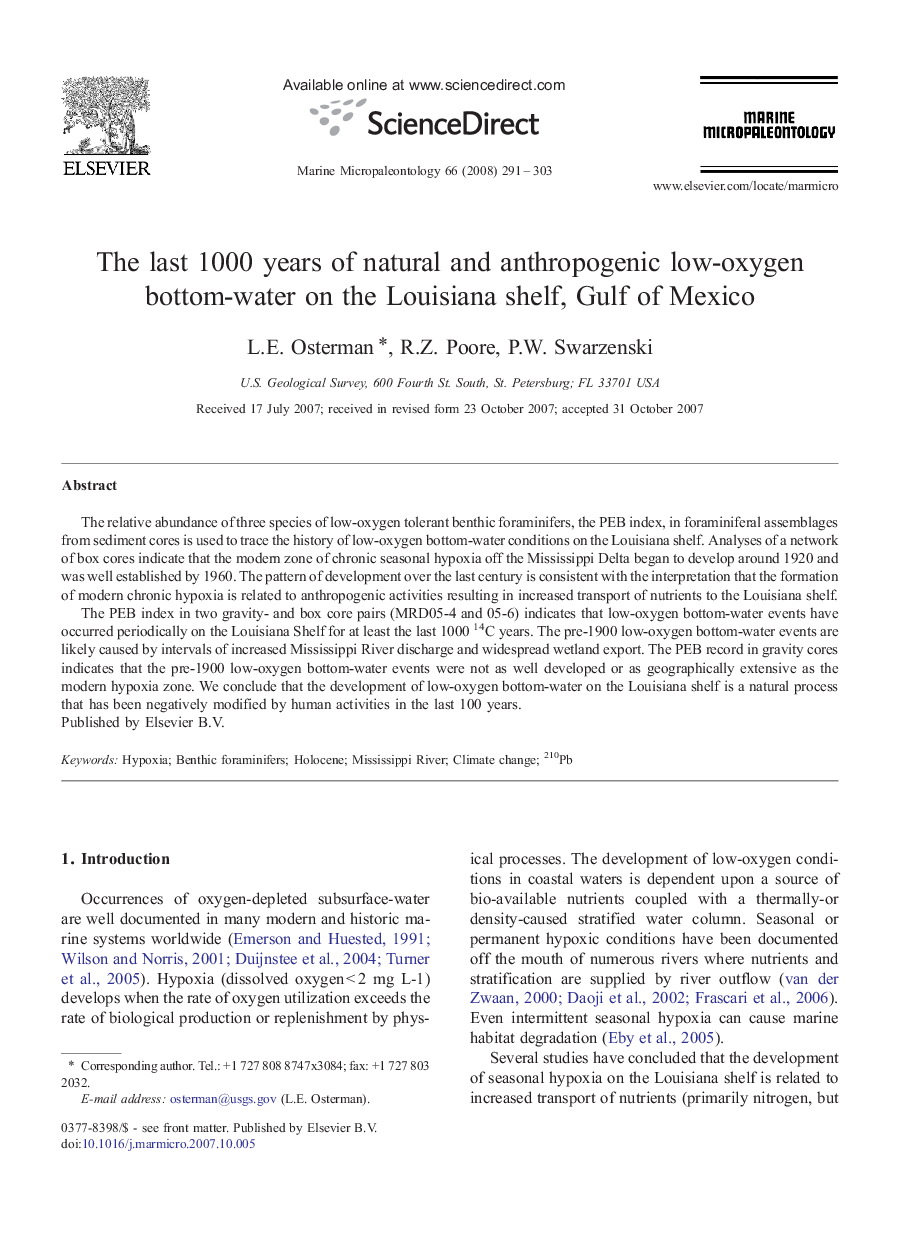| Article ID | Journal | Published Year | Pages | File Type |
|---|---|---|---|---|
| 4749405 | Marine Micropaleontology | 2008 | 13 Pages |
The relative abundance of three species of low-oxygen tolerant benthic foraminifers, the PEB index, in foraminiferal assemblages from sediment cores is used to trace the history of low-oxygen bottom-water conditions on the Louisiana shelf. Analyses of a network of box cores indicate that the modern zone of chronic seasonal hypoxia off the Mississippi Delta began to develop around 1920 and was well established by 1960. The pattern of development over the last century is consistent with the interpretation that the formation of modern chronic hypoxia is related to anthropogenic activities resulting in increased transport of nutrients to the Louisiana shelf.The PEB index in two gravity- and box core pairs (MRD05-4 and 05-6) indicates that low-oxygen bottom-water events have occurred periodically on the Louisiana Shelf for at least the last 1000 14C years. The pre-1900 low-oxygen bottom-water events are likely caused by intervals of increased Mississippi River discharge and widespread wetland export. The PEB record in gravity cores indicates that the pre-1900 low-oxygen bottom-water events were not as well developed or as geographically extensive as the modern hypoxia zone. We conclude that the development of low-oxygen bottom-water on the Louisiana shelf is a natural process that has been negatively modified by human activities in the last 100 years.
